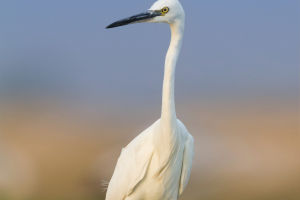The Eastern Bluebird is a true marvel of nature, dazzling us with its vibrant colors and cheerful warbles.
Often seen during chilly, snowy days, bluebirds are a heartwarming sight, signifying the approaching spring.
Their brilliant blue plumage and sweet songs are a joy to birdwatchers and nature lovers alike. But what makes these birds so special? Let's explore their incredible story and how we can help preserve them!
Bright and Beautiful: The Bluebird's Appearance
The Eastern Bluebird wears a coat of pure, brilliant blue—its back, wings, and tail shimmer in the sunlight, earning it a well-deserved place as one of North America's most iconic birds. In fact, the bluebird's striking appearance has made it a symbol of happiness and beauty in popular culture.
The Bluebird's Comeback
Sadly, the Eastern Bluebird's population faced serious declines in the early 20th century, due to the introduction of invasive species, habitat loss, and the harmful effects of pesticides. However, thanks to the efforts of dedicated conservationists and organizations like the North American Bluebird Society, the bluebird has made a heartening comeback.
Bluebird Behavior: A Glimpse Into Their World
Bluebirds are fascinating creatures that help us understand the delicate balance of nature. They are considered “secondary cavity nesters,” meaning they don't create their own nests but instead repurpose cavities left behind by larger birds like woodpeckers. In fact, the success of bluebird conservation largely hinges on providing safe nesting sites through artificial nest boxes.
Feeding and Nesting Habits
The Eastern Bluebird's diet primarily consists of insects, such as crickets, grasshoppers, and beetles, and during winter, they also consume fruit. These birds have a unique hunting method: they perch quietly and wait for their prey to appear, swooping down to capture it once spotted. They also enjoy visiting feeders, particularly for meal-worms, sunflower seeds, and suet.
While they are monogamous during the breeding season, bluebirds often gather in small flocks in other months, seeking warmth and shelter, especially during cold winters. They sometimes roost together in cavities, offering each other comfort during harsh conditions.
Helping the Bluebird: A Call to Action
One of the most important ways we can help protect the Eastern Bluebird is by providing them with artificial nesting sites and by ensuring their habitats remain safe from the threat of invasive species. The House Sparrow and European Starling, both introduced species, are aggressive competitors for nesting sites and have been a significant factor in bluebird population decline.
In addition to nest box initiatives, we must also focus on eliminating harmful pesticides, such as chlorpyrifos and neonicotinoids, which pose grave risks to many bird species, including the Eastern Bluebird. By taking action to protect these magnificent birds, we can ensure that future generations will enjoy their beauty and song.
The Eastern Bluebird is more than just a beautiful bird, it's a symbol of hope, resilience, and the power of conservation. Through our efforts, these birds are no longer a rare sight but a beloved part of our natural world. Let's continue to support their protection and ensure that their vibrant blue feathers continue to light up the skies for years to come.
After all, the Eastern Bluebird isn't just a bird—it's a reminder that with care and dedication, we can help nature thrive!


